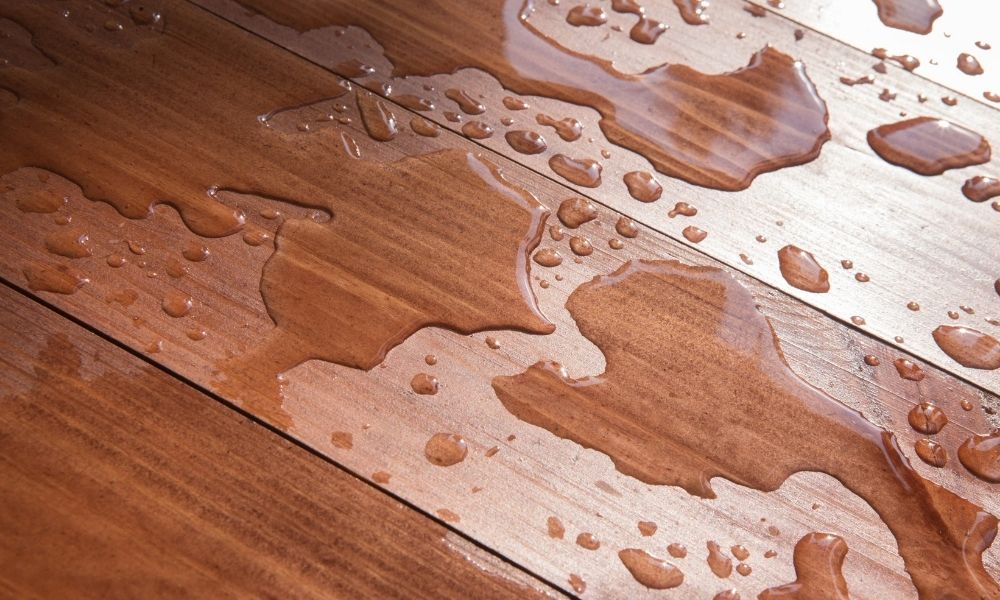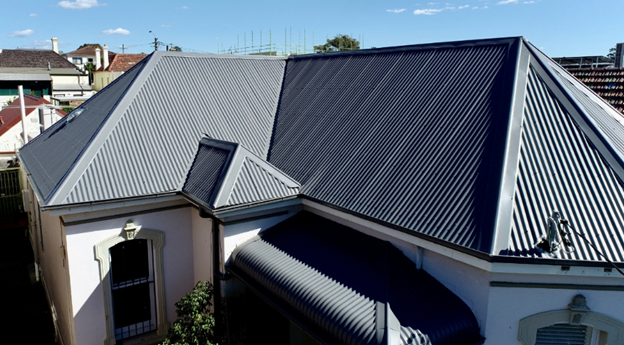What is Asbestos?
Asbestos is a group of naturally occurring minerals known for their fibrous composition and remarkable resistance to heat, fire, and chemicals. These properties made asbestos a popular choice in the construction and manufacturing industries for decades. However, asbestos is not a single substance but a family of minerals that can be separated into thin, durable fibers. Unfortunately, these fibers are microscopic and can become airborne, posing significant health risks when inhaled.
Health Implications of Asbestos Exposure
Exposure to asbestos fibers is a serious health hazard. Once inhaled, these tiny fibers can lodge in the lungs and remain there for years, leading to severe health conditions. Repeated exposure increases the risk of developing diseases such as mesothelioma, lung cancer, and asbestosis. The latency period for these diseases is long, often taking 20 to 50 years to manifest symptoms. It’s important to note that asbestos exposure, even in small amounts, is dangerous, and there is no safe level of exposure.
Common Sources of Asbestos in Buildings
Asbestos was widely used in building materials due to its durability and insulating properties. Common sources include:
- Insulation materials in older homes and buildings
- Roofing shingles and siding
- Vinyl floor tiles and adhesives
- Cement products and pipes
These materials, when disturbed during renovations or demolitions, can release asbestos fibers into the air, creating a hazardous environment. For this reason, it’s crucial to have professionals assess and handle any asbestos-related concerns in buildings.
The Role of Air Purifiers in Asbestos Removal
How Air Purifiers Work
Air purifiers are devices designed to improve indoor air quality by removing contaminants from the air. They operate by drawing air through a series of filters that capture particles. HEPA filters are particularly effective because they can trap very fine particles, including asbestos fibers, which are known to be harmful when inhaled.
Limitations of Air Purifiers for Asbestos
While air purifiers, especially those equipped with HEPA filters, can capture airborne asbestos particles, they are not a complete solution for asbestos removal. Air purifiers cannot address asbestos at its source. If asbestos materials are present and disturbed, they can continuously release fibers into the air, making it crucial to address the source directly.
Complementary Measures for Asbestos Management
To effectively manage asbestos, it is important to combine air purification with other strategies. Hiring professionals for asbestos abatement is essential, as they can safely remove or contain asbestos materials. After professional removal, using an air purifier can help clear any remaining airborne fibers, providing a safer environment for occupants.
HEPA Filters: The Gold Standard for Asbestos Filtration
What Makes HEPA Filters Effective?
HEPA filters, short for High-Efficiency Particulate Air filters, are renowned for their ability to trap tiny particles, making them highly effective in filtering asbestos fibers. These filters boast an impressive efficiency rate of 99.97%, capable of capturing particles as small as 0.3 microns. This makes them particularly suited for environments where asbestos is a concern. The filter consists of a dense web of fibers, often made from fiberglass, which acts as a barrier to airborne particles, including asbestos.
Comparing HEPA and HEPA-Type Filters
When considering air purifiers for asbestos, it’s vital to distinguish between true HEPA filters and HEPA-type filters. True HEPA filters meet stringent standards and undergo rigorous testing to ensure their effectiveness, while HEPA-type filters may not provide the same level of filtration. They are often less expensive but lack the certification that guarantees the removal of fine particles like asbestos. When dealing with asbestos, only a true HEPA filter can ensure the safety and cleanliness of the air.
Medical-Grade HEPA Filters for Asbestos
For environments with a high risk of asbestos exposure, medical-grade HEPA filters are recommended. These filters, classified as HEPA H13 or H14, are designed to capture 99.97% of airborne particles down to 0.01 microns in a single pass. This level of filtration is crucial in medical and industrial settings where asbestos contamination may be present. Medical-grade HEPA filters provide an added layer of security, ensuring that even the smallest asbestos fibers are trapped, significantly reducing the risk of exposure.
Choosing the Right Air Purifier for Asbestos Removal
Key Features to Look For
When selecting an air purifier for asbestos removal, the first and foremost feature to consider is a HEPA-certified filter. These filters are designed to capture particles as small as 0.01 microns, making them effective against asbestos fibers. It’s essential to differentiate between true HEPA filters and “HEPA-type” filters, as the latter do not undergo the same rigorous testing and may not provide adequate protection against asbestos particles. Look for air purifiers that specify a 99.97% efficiency rate at 0.3 microns, as this is the standard for true HEPA filters. Additionally, consider models with multiple filtration stages, including activated carbon filters, to help remove any asbestos-related odors or gases.
Sizing Your Air Purifier Correctly
The effectiveness of an air purifier is heavily dependent on its ability to cover the intended space adequately. When choosing a unit, ensure it is appropriately sized for the room or area where asbestos contamination is a concern. Manufacturers often provide coverage area specifications, which are crucial for ensuring the purifier can handle the space. For example, some models like the Eoleaf series offer different sizes tailored for various room dimensions. It’s wise to select a model that slightly exceeds the minimum coverage requirement to ensure optimal performance.
Brands and Models Recommended for Asbestos
Several brands offer air purifiers specifically designed for asbestos removal. When evaluating options, prioritize those with a proven track record in dealing with fine particles. Models that have received positive reviews for their performance in asbestos filtration often feature in-depth testing and certifications. Some recommended brands include those that incorporate both HEPA and activated carbon filters, providing a comprehensive approach to air purification. Always check for third-party certifications and user reviews to ensure the model meets your specific needs.
Activated Carbon Filters and Asbestos-Related Odors
How Activated Carbon Filters Work
Activated carbon filters are a popular choice for improving indoor air quality by removing various pollutants. These filters contain granules or fibers of carbon that have been treated to be highly porous. This porosity allows them to trap gases and odors effectively. Activated carbon is especially good at capturing volatile organic compounds (VOCs) and other gaseous pollutants, which are common in indoor environments. The carbon’s surface area is vast, with just a gram of activated carbon providing hundreds of square meters of surface area for adsorption. Activated carbon works through a process called adsorption, where pollutants stick to the surface of the carbon material.
Effectiveness in Odor Removal
When it comes to asbestos-related concerns, the primary issue isn’t the asbestos fibers themselves, as these are best handled by HEPA filters, but rather the odors that may accompany asbestos removal processes. Activated carbon filters are quite effective in removing these odors. They work by adsorbing the odor-causing molecules onto the carbon’s surface. This is particularly useful in post-abatement scenarios where the smell of materials used in asbestos removal or residual odors from asbestos itself might linger. For instance, smoke from fires can contain harmful compounds that activated carbon can help mitigate, similarly aiding in reducing asbestos-related odors.
Combining Filters for Comprehensive Air Quality
For the best indoor air quality, it’s often recommended to use a combination of filters. While HEPA filters are excellent for removing particulate matter like asbestos fibers, they do not eliminate odors or gases. Combining HEPA with activated carbon filters provides a more comprehensive solution. Here’s a simple breakdown:
- HEPA Filters: Capture fine particles, including asbestos fibers.
- Activated Carbon Filters: Adsorb odors and gaseous pollutants.
- Pre-Filters: Capture larger particles, extending the life of other filters.
By using these filters together, you can address both particulate matter and gaseous pollutants, ensuring a cleaner and healthier indoor environment.
Residential vs. Commercial Use of Air Purifiers for Asbestos
Differences in Air Purifier Requirements
When it comes to using air purifiers for asbestos, the requirements can differ significantly between residential and commercial settings. Residential air purifiers are generally smaller and designed for limited spaces, focusing on personal health and comfort. In contrast, commercial settings often require larger units that can handle extensive areas and higher volumes of air.
For residential use, choosing a model with a HEPA-certified filter is essential, as these filters are capable of capturing asbestos fibers effectively. In commercial environments, air purifiers must not only be HEPA-certified but also have a higher capacity to ensure comprehensive air purification across larger spaces.
Ensuring Proper Coverage in Large Spaces
Proper coverage is crucial, especially in large commercial spaces. To achieve this, it’s important to select air purifiers based on the size and volume of the area they need to cover. Here are some steps to consider:
- Calculate the total area that requires purification.
- Select air purifiers with the appropriate coverage capacity, such as models like AEROPRO 150, which is designed for spaces up to 120 m².
- Position the units strategically to ensure even distribution of purified air throughout the space.
Case Studies of Effective Use
Various case studies highlight the successful use of air purifiers in both residential and commercial settings. For instance, in a residential setting, a family used a HEPA-certified air purifier to reduce airborne asbestos during renovation work, significantly improving indoor air quality.
In a commercial context, a warehouse opted for multiple high-capacity air purifiers to maintain air quality standards. By strategically placing these units, they effectively managed asbestos fibers released during routine maintenance tasks. This approach not only safeguarded the health of employees but also ensured compliance with EPA regulations on asbestos handling.
In both scenarios, the key to success was selecting the right air purifiers tailored to the specific needs and characteristics of the environment. Additionally, using proper protective gear during asbestos handling further enhanced safety measures.
The Science Behind Airborne Asbestos Particles
Size and Behavior of Asbestos Particles
Asbestos particles are notoriously small, ranging from 0.7 to 90 microns in size. This tiny size makes them invisible to the naked eye, allowing them to be easily inhaled or ingested without being noticed. Once airborne, these particles can linger for a long time, increasing the risk of exposure. Their small size is what makes them particularly dangerous, as they can penetrate deep into the lungs, leading to serious health issues.
Challenges in Capturing Asbestos
Capturing asbestos particles is a significant challenge due to their microscopic size. While HEPA filters are designed to trap particles as small as 0.3 microns, asbestos particles can be both larger and smaller than this threshold. This means that while HEPA filters are effective, they might not capture every single particle, especially if the source of asbestos is still active and releasing fibers into the air. Regular maintenance and replacement of filters are crucial to ensure continued effectiveness.
Research on Air Purifier Effectiveness
Research has shown that while air purifiers equipped with HEPA filters can significantly reduce the concentration of airborne asbestos fibers, they are not a standalone solution. A study by A Brostrøm in 2024 identified high asbestos concentrations during specific removal activities, highlighting the need for comprehensive safety measures. Air purifiers should be used in conjunction with other methods, such as professional asbestos abatement, to effectively manage asbestos exposure. This combination ensures a safer environment, minimizing the health risks associated with asbestos.
Professional Asbestos Abatement and Air Purifiers
Why Professional Removal is Essential
When dealing with asbestos, hiring professionals is not just recommended—it’s essential. Asbestos fibers, once disturbed, can linger in the air for up to 40 hours, posing serious health risks. Certified asbestos removal companies are trained to handle and remove asbestos safely, minimizing the risk of exposure. They use specialized equipment and techniques to ensure that asbestos is properly contained and disposed of. Relying on experts ensures that the removal process adheres to safety regulations and reduces the chance of asbestos fibers spreading further.
Post-Abatement Air Quality Management
After professional asbestos abatement, maintaining air quality is crucial. This is where air purifiers come into play. A HEPA-certified air purifier can capture any remaining airborne asbestos particles, ensuring the air is safe to breathe. It’s important to choose an air purifier that is appropriately sized for your space to ensure comprehensive filtration. Post-abatement, consider using air purifiers as a supplementary measure to maintain clean air and monitor air quality regularly.
Legal and Safety Considerations
Engaging in asbestos removal without proper certification can lead to legal repercussions and health risks. Regulations require that asbestos abatement be conducted by certified professionals to ensure compliance with safety standards. This not only protects the individuals performing the removal but also those occupying the space. Furthermore, using modern asbestos removal equipment, which is engineered for enhanced efficiency and effectiveness, significantly reduces the spread of asbestos fibers. Innovations in this sector are crucial for improving construction safety and addressing health risks associated with asbestos exposure modern asbestos removal equipment.
Innovations in Air Purifier Technology for Asbestos
Recent Advances in Filtration Technology
In the world of air purifiers, technology never stands still. One of the latest breakthroughs is the development of advanced HEPA filters that can capture 99.97% of asbestos fibers. These filters are designed to trap particles as small as 0.01 microns, which is crucial for dealing with asbestos. Robotic technologies have also emerged, allowing for safer asbestos removal by minimizing human exposure. These robots can work in hazardous environments, making the process more efficient and less risky.
Smart Features and Remote Monitoring
Modern air purifiers are becoming smarter with each iteration. Many models now come equipped with Wi-Fi connectivity, allowing users to monitor and control their devices remotely. This is particularly useful for maintaining air quality in spaces that are not always occupied, such as commercial buildings. Smart sensors can detect changes in air quality and automatically adjust the purifier’s settings to ensure optimal performance.
Future Trends in Air Purification
Looking ahead, the future of air purification technology is promising. Researchers are exploring the use of nanotechnology to create even more efficient filters. There’s also a push towards developing energy-efficient models that reduce power consumption without compromising on performance. As awareness of air quality issues grows, we can expect to see continued innovation in this field, with new products designed to meet the specific challenges posed by asbestos and other airborne pollutants.
Evaluating the Cost-Effectiveness of Air Purifiers for Asbestos
Initial Investment vs. Long-Term Benefits
When considering air purifiers for asbestos, the initial cost can be significant. Whole-house air filtration systems range widely in price, typically from $419 to $4,962, with an average of about $2,610 whole-house air filtration system. This upfront investment can be daunting, but it’s important to weigh it against the long-term health benefits. Reducing asbestos exposure can potentially avoid costly medical treatments associated with asbestos-related diseases.
Maintenance and Operational Costs
Beyond the initial purchase, maintenance costs are another factor. Regularly replacing HEPA filters is crucial for maintaining effectiveness. Depending on the model, these filters can be replaced annually or semi-annually. Operational costs also include electricity usage, which can vary based on the air purifier’s size and power consumption.
Return on Investment for Health and Safety
The return on investment for air purifiers can be substantial, especially when considering health and safety. Indoor air quality testing, which can cost around $420 on average indoor air quality testing, helps ensure that the air purifier is functioning effectively. By maintaining a clean air environment, individuals can reduce health risks and potentially lower medical expenses in the long run.





